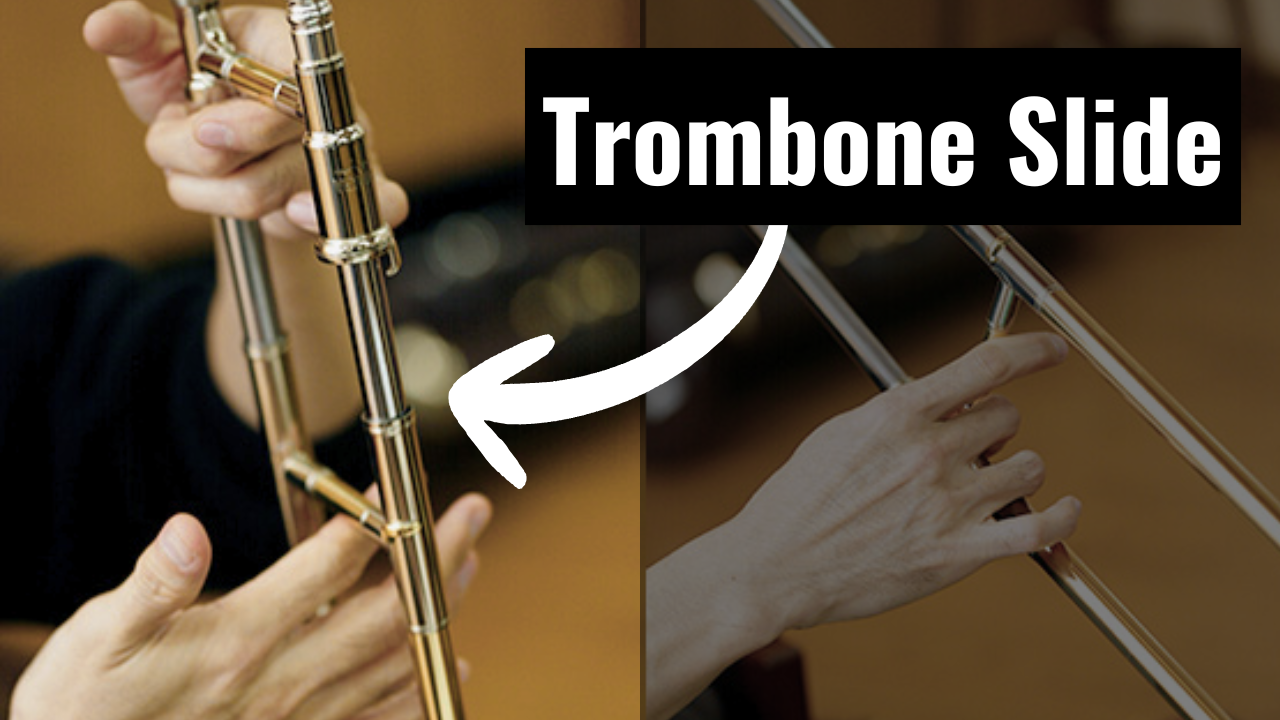Regular cleaning and lubricating of your trombone slide is an important part of your care routine. Neglecting it can reduce the lifetime of your instrument and affect its playability. In this article, we will explore how to clean and lubricate your trombone slide to keep it in the best condition and protect from negative impact.
Why You Need to Clean Your Trombone Slide
Clean instruments sound better than dirty ones. For a trombone, a clean side moves smoothly, providing you with precise pitch control and helping achieve the desired sound. If you neglect a cleaning routine, you will likely get a build-up of dirt on your slide, which will make it sluggish or sticky over time. The dirt also prevents it from moving smoothly and thus it negatively affects your performance.
Accumulated dirt and moisture increase the risk of damage to the brass surface. Mostly it ends up with corrosion, which affects your overall trombone’s functionality. By keeping your slide in good condition, you extend the lifetime of your instrument and protect yourself from the risk of costly repairs.
How to Clean Your Trombone Slide: Step-By-Step Guide
First you need a set of cleaning tools:
- Cleaning rod.
- Soft cloth (many trombonists use an old bedsheet for this purpose😅).
Once you have your cleaning set, let’s move to the main part of the process:
-
Remove the outer slide. Ensure that you keep the inner slide in a safe place.
-
Pull the cloth through the eye of the cleaning rod. Its tip should be totally covered with cloth. Then cover the rest of the rod. It’s important to pull it in a way that no metal parts are exposed as they can damage your slide.
-
Take your cleaning rod and push it into the slide. You can feel a tight fit and it’s okay. Start pushing and pulling, moving the cleaning rod back and forth. Repeat the action for the other side of your slide.
-
Once you’ve finished with cleaning your outer slide, it’s time to take care of your inner slide. Take a soft microfiber cloth or towel and wipe down the slide until it’s clean.
How to Lubricate Your Trombone Slide
First of all, there is a misconception that you should lubricate the inner slide to make it function in the right way, while the truth is that you should lubricate the outer slide on the inside.
Typically professional trombonists use slide cream or slide oil for their instruments. Cream is considered thicker than oil.
- Cream. If you use a slide cream, ensure you use a small amount of it. The less you use the better. Apply it only to the area where the slide gets a bit thicker toward the end — also known as the stocking. Once you have lubricated the end carefully, remove any excess cream. Insert the inner slide into the corresponding side of the outer slide and move the outer slide back and forth to distribute the cream evenly.
- Oil. If you use a slide oil, always shake the bottle before use. You should apply the oil on the area where the slide gets a bit thicker toward the end. Also, you can apply it throughout the slide. Take the corresponding side of the outer slide, insert the inner slide into it and move back and forth to distribute the oil.
After lubricating your trombone slide, take a spray bottle filled with distilled water and spray it on the stockings of the inner slide and the rest of the surface.
Now check if you’ve lubricated the slide correctly. Take your slide and hold it at a 45-degree angle. Use your finger to prevent it from falling on the floor and let it fall naturally toward your finger. If your slide passes this test, you’ve done everything properly. If something goes wrong and you experience some resistance, add a bit more lubricant. With practice, you will learn exactly how much oil or cream your slide needs.
Additional Tips on Keeping Your Trombone Slide in Top Condition
- If you feel that the slide becomes sluggish after playing for 10 to 15 minutes, you should contact the specialist.
- You should always lubricate only a clean slide, as the dirt and moisture can prevent it from being lubricated properly. You should thoroughly clean both the outside of the inner slide and the inside of the outer slide before applying oil or cream.
- After each practice, use a trombone slide swab to remove moisture from the inner slide.
- Use a water key to remove water after playing.
- Once in a month, it’s useful to reapply grease.
How To Protect Your Trombone Slide in Everyday Use
When performing and practicing your hands constantly get in contact with the slide, exposing it to sweat. Special trombone hand and neck guards can shield your instrument in the vulnerable area where you hold it. Today, on the market you can find leather accessories equipped with laces, which make their installation effortless while helping them stay in place during performances.
When traveling from home to your music school or rehearsal place, you regularly expose your instrument and slide to accidental shocks or drops. In addition to padded bags, you can also use flannel textile storage bags for your trombone with a separate bag for its slide. This will help you keep your instrument and its slide separate from each other, preventing them from scratches while adding an extra protective layer to your standard bag.
Conclusion
Over time dirt and moisture can build up inside your trombone slide and become a reason why it feels sticky or slow. This immediately affects your performance as a dirty slide is more difficult to move. Moreover, the build-up of moisture can increase the risk of corrosion that can damage the slide over time.
By regularly cleaning the slide, you keep it in the best condition and it pays you with smooth movement and better sound. The cleaning routine doesn’t take much time, however it protects your trombone slide and allows you to enjoy your practice more.
You can find cleaning kits and other useful gear in our category of Trombone/Euphonium Accessories.
Recently we’ve also explored Top 5 Accessories Every Trombone Player Needs. Feel free to check this article.







 https://kgumusic.com/pages/about-us
https://kgumusic.com/pages/about-us